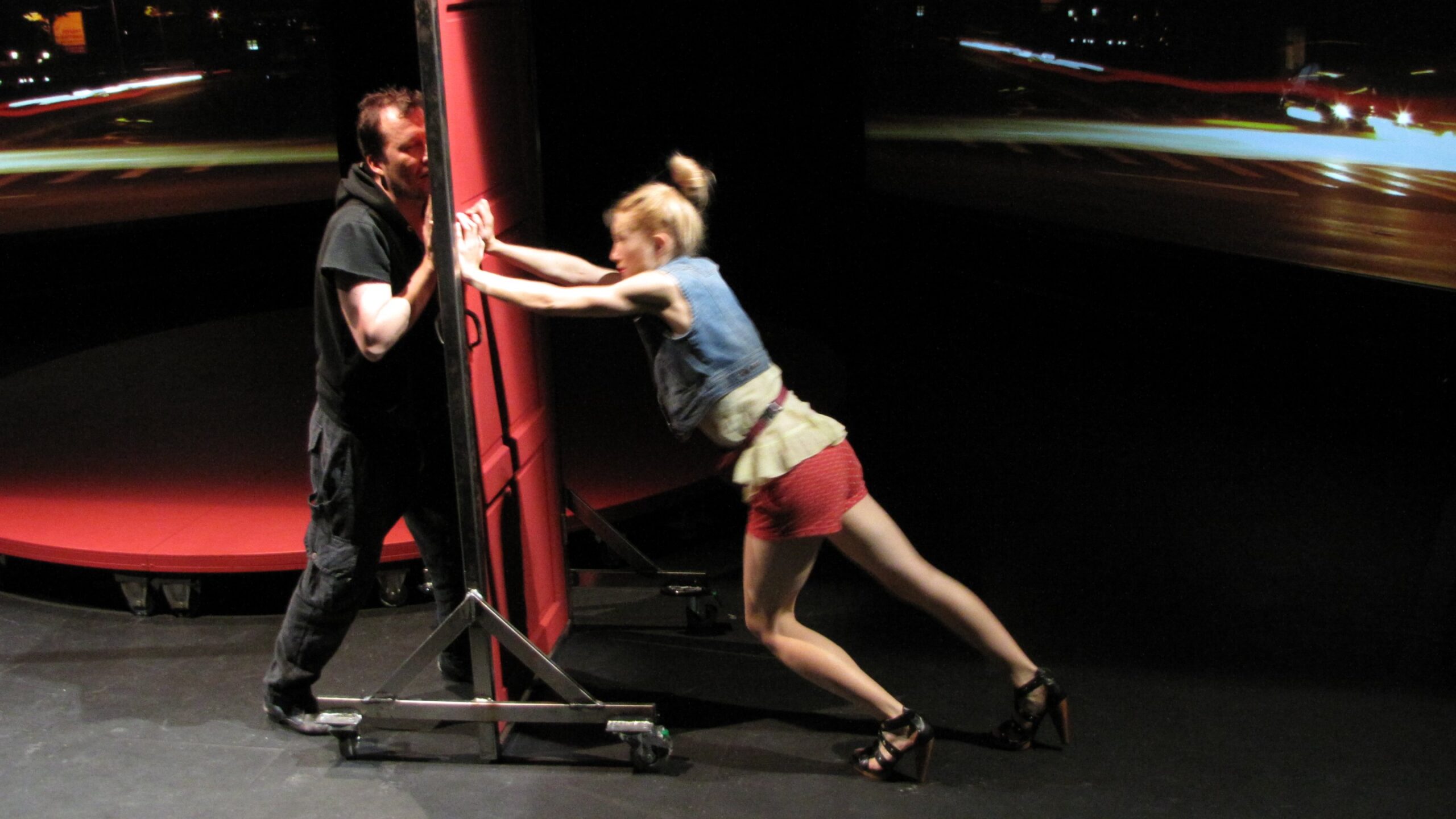
Reija Hirvikoski’s design for Dostojevsky’s Crime and Punishment at Oulu City Theatre in Finland
Photo: Reija Hirvikoski
A look behind the scenes
Alice Cabanas asks why women are so underrepresented among theatre production design teams in the UK.
Women are outnumbered by men in British theatre by two to one across the industry, according to a study by Elizabeth Freestone last year. The statistics worsen when you look at the number of women working in design and technical theatre. She examined the number of female employees in ten leading UK theatres. These figures were at their lowest in lighting and sound, with sound design being the least equally represented. Six of the venues had no female sound designers at all employed as part of their creative teams between 2011 and 2012, and overall only 6.6% of all sound designers employed during the same year were women. Lighting design also fared badly: only 14.8% of lighting and sound designers employed during 2011 and 2012 were women.
So where does this imbalance begin? Are enough female design students applying to train? Are the technical professions suitably open for them to start their career? In speaking with course leaders and other people working in this field, there is no suggestion that the number of women training for careers in theatre, including theatre design, is a problem. Elizabeth Freestone explains: “For people interested in working in theatre, the research shows that at entry level men and women are equal. This is true for directors, designers and writers in training. Lighting and Sound Design still has some way to go but has shown significant improvement in the last five years. From the research, I’m confident the industry is an equally attractive proposition for both men and women at the outset of their careers. The problems come later down the line, specifically at mid-career stage. Roughly, people working in theatre in their twenties are nearly 50/50, in their thirties it’s about 40/60, in their forties 30/70 and their fifties 20/80. So the question is not how do we attract women to working in theatre but how do we keep women working in theatre.”
Next time you go and watch a production, read the programme and check how many women’s names are on there
To progress with a career in performance design women face a number of challenges. Moving on to larger-scale productions seems to be a path followed more often by male designers than by their female counterparts. So do women, regardless of their talent, often hit a glass ceiling? Added to these potential hurdles are the demands of family life for those with children. That elusive parenting/work balance is a problem that women face across many industries and is not specific to theatre or theatre design. But there are parts of this industry that add to these challenges and could affect women either maintaining their career or returning to work after a maternity break. Many designers are freelance, so there is no structured maternity leave or pay, and the flexibility needed can be hard to achieve with evening rehearsals, travel and touring.
But many are looking to the future with positivity and encouragement. Sound designer Sophie Smith, who focused her final year dissertation on female sound designers while studying at the Royal Welsh College of Music & Drama in Cardiff, encourages more women to follow their dreams, and not to be put off by the numbers: “The industry is ready and waiting for young and ambitious designers who are passionate about their jobs regardless of gender; women just need to go out and do it.”
And what about us, the audiences? Should we be demanding more equality in our theatres? Female attendees reportedly make up more than 60% of British audiences, so should we not be more equally represented both in and behind the performances that we pay to see? Next time you go and watch a production, read the programme and check how many women’s names are on there. It’s something I’ve started to do recently, and although it’s by no means a scientific analysis, it is certainly an eye opener.
During my time at World Stage Design 2013, I have met and worked alongside inspiring and successful female performance designers from the UK and across the world. Spanning disciplines and at various stages in their careers, they are clear masters of their craft and demonstrate that female performance designers are able to excel in this profession.
We need to remember that anything is possible. Statistics are changing, and important research such as that of Elizabeth Freestone, allows open discussion and debate based on numbers, not just anecdotal evidence.
Alice Cabanas is Marketing Coordinator at World Stage Design 2013.
www.wsd2013.com
www.pentabus.co.uk
Join the Discussion
You must be logged in to post a comment.